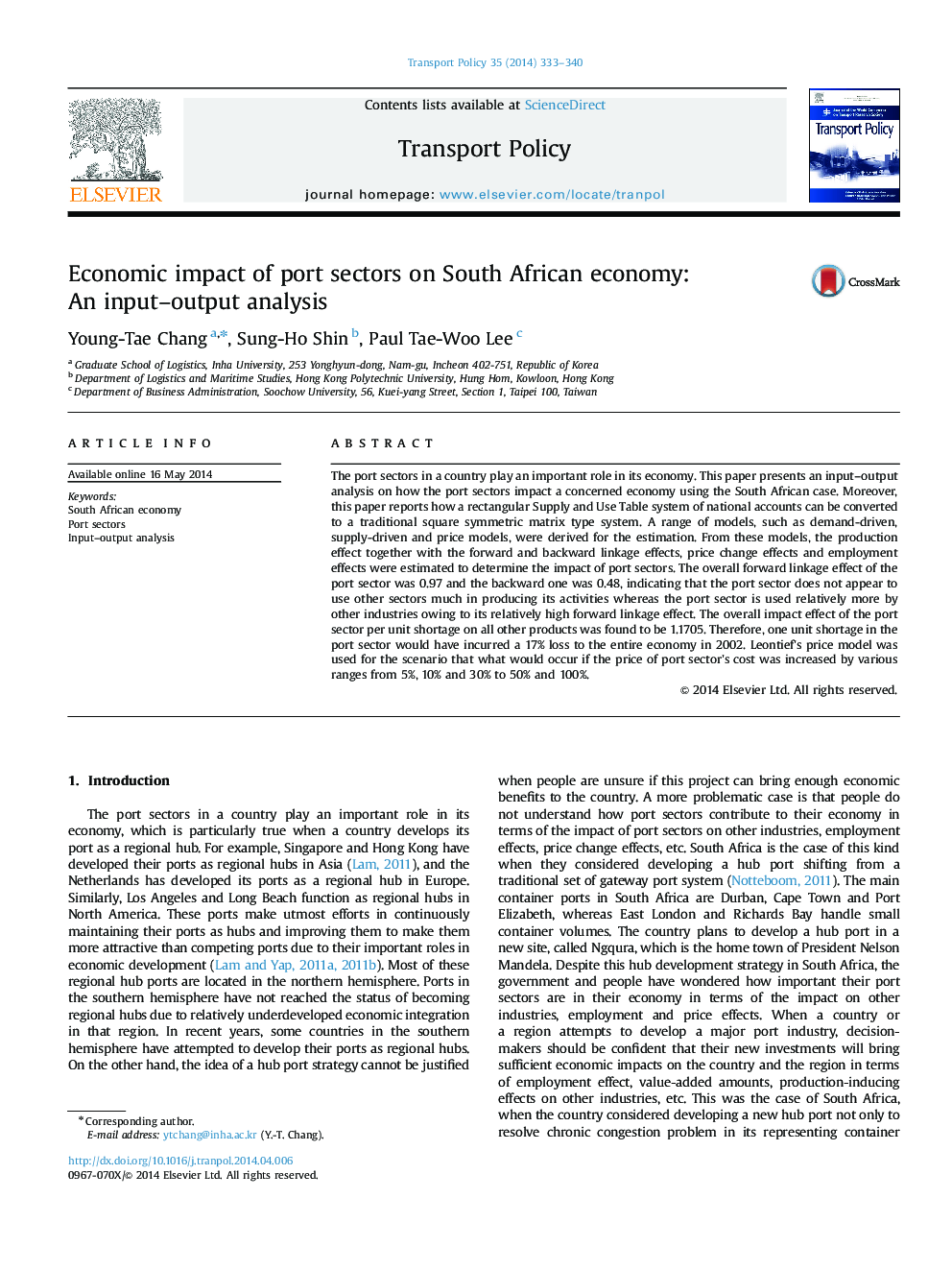| Article ID | Journal | Published Year | Pages | File Type |
|---|---|---|---|---|
| 1064889 | Transport Policy | 2014 | 8 Pages |
•This paper presents an input-outputinput-output analysis on how the port sectors impact a concerned economy using the South African case.•How a rectangular Supply and Use Table system of national accounts is converted to a traditional square symmetric matrix type system.•A range of models, such as demand-driven, supply-driven and price models, were derived for the estimation.
The port sectors in a country play an important role in its economy. This paper presents an input–output analysis on how the port sectors impact a concerned economy using the South African case. Moreover, this paper reports how a rectangular Supply and Use Table system of national accounts can be converted to a traditional square symmetric matrix type system. A range of models, such as demand-driven, supply-driven and price models, were derived for the estimation. From these models, the production effect together with the forward and backward linkage effects, price change effects and employment effects were estimated to determine the impact of port sectors. The overall forward linkage effect of the port sector was 0.97 and the backward one was 0.48, indicating that the port sector does not appear to use other sectors much in producing its activities whereas the port sector is used relatively more by other industries owing to its relatively high forward linkage effect. The overall impact effect of the port sector per unit shortage on all other products was found to be 1.1705. Therefore, one unit shortage in the port sector would have incurred a 17% loss to the entire economy in 2002. Leontief׳s price model was used for the scenario that what would occur if the price of port sector׳s cost was increased by various ranges from 5%, 10% and 30% to 50% and 100%.
